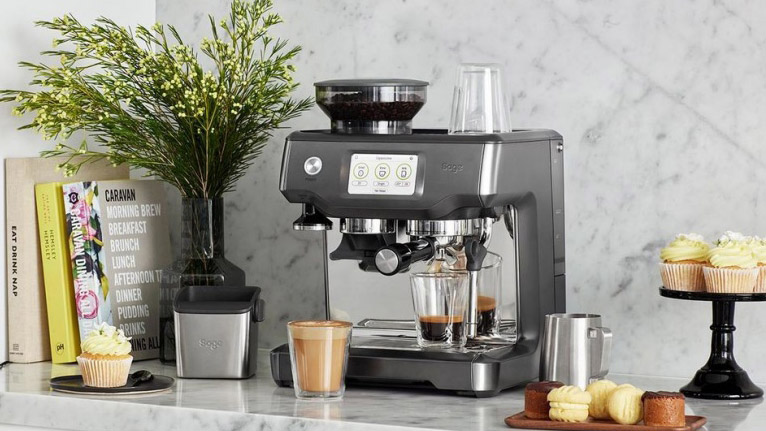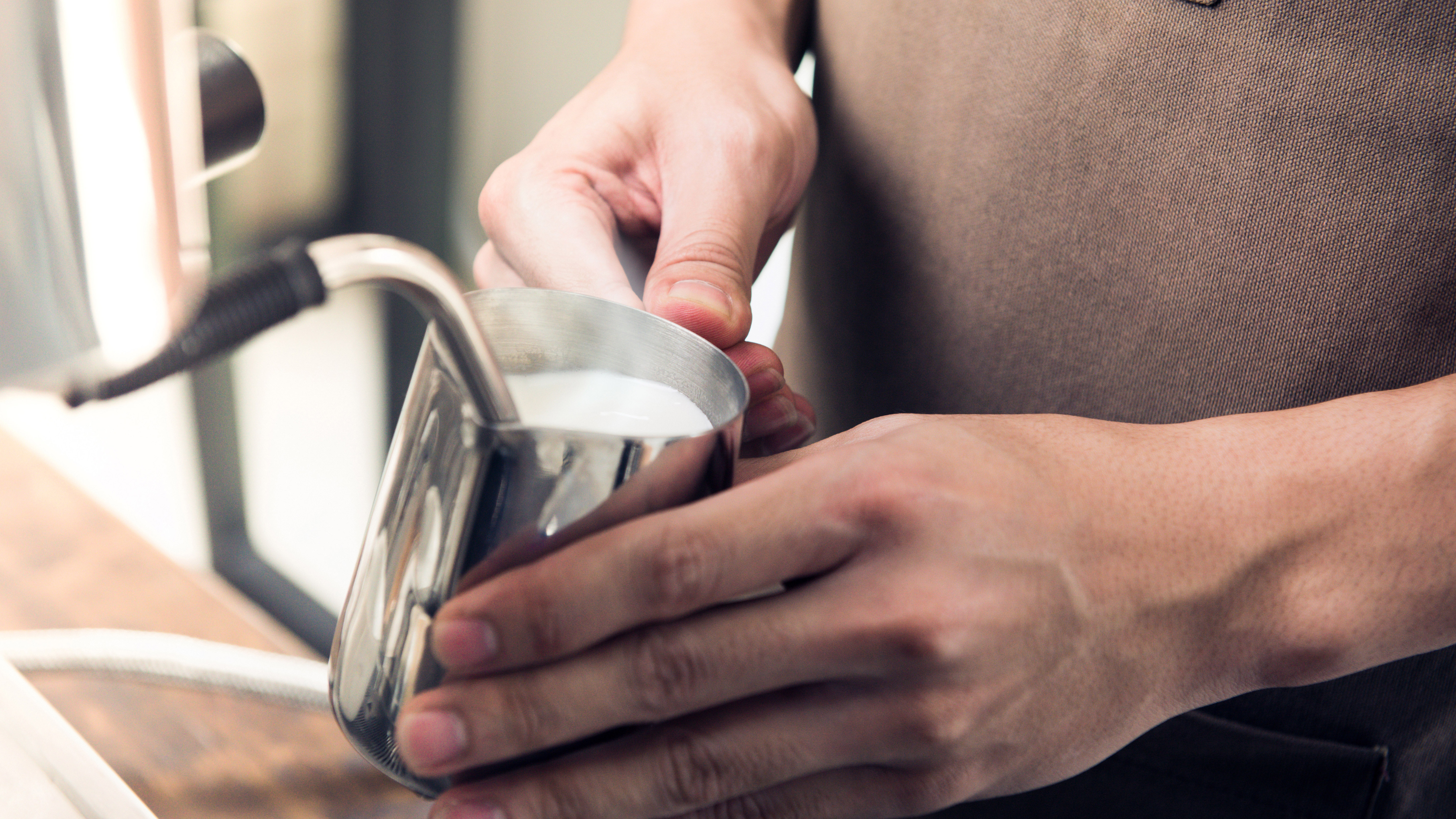We ask a barista how to make coffee-shop worthy drinks at home
Screw Starbucks - you can do it just as well at home

There’s nothing better than enjoying a hot drink from a coffee shop. Whether you prefer a short, intense shot of espresso or a creamy, long latte, getting your daily caffeine fix can be just as important as washing your hair or brushing your teeth.
However, regular trips to coffee shops are costly, and if the shutters come down, as they did during the global pandemic, you could be left without access to a refreshing cup of Java every day. This is where the best coffee makers can help, letting you create espresso and a range of coffee-based drinks in the comfort of your own home.
According to UK retailer AO.com, sales of coffee machines soared by 412% in the UK during lockdown. But having one of the best coffee makers is only half of the battle - knowing the tips and tricks baristas in coffee shops use to ensure a perfect brew every time is also key. If you’re not one of the quarter of Americans that learnt how to use an espresso machine properly during lockdown (according to Mr Coffee) then listen up.
We spoke to Luke Powell, Speciality Coffee Manager at Sage, which produces a wide range of coffee makers including espresso machines and bean to cup coffee makers such as the Bambino Plus and the Barista Touch.
A former barista and an entrant into the UK Barista Championships, Powell joined Sage in 2019 to help teach consumers how to get the most out of their espresso machines. He filled us in on his top tips for getting the most out of your coffee machine.
Fancy making coffee at home rather than reading on to find how to make various coffee-based drinks, then check out these great deals for some of the best on the market.
1. Start with a clean portafilter
Espresso machines work by pushing pressurised hot water through ground coffee. The coffee sits in a basket, which depending on the size can either hold enough for a single or a double shot of espresso. The basket is placed in a portafilter, which is essentially a handle that means you can easily remove the hot ground coffee once your drink has been brewed.
Sign up for breaking news, reviews, opinion, top tech deals, and more.
It’s important to clean the portafilter between every use.
According to Powel, the simplest way to do this is to place the empty basket into the portafilter and run a single shot of water through it. As well as ensuring the group head (the part of the espresso machine where water from the boiler is dispensed into the portafilter) is clean, Powell points out this will also ensure your portafilter and machine is at the perfect temperature, but don’t forget to give it a wipe with a dry cloth before adding the ground coffee, he added.
If you’re using a bean to cup machine that’s fully automatic and doesn’t have a removable portafilter, dispense hot water into the cup to warm the machine before you brew your coffee. You can find out in-depth how to clean a coffee maker in our article.
2. Create a consistent puck
Whether you’re using a semi-automatic coffee machine that grinds and dispenses coffee into the portafilter for you, or a manual machine that requires you add the coffee yourself, the puck (or disc) of coffee you create in the portafilter should be perfectly level and compact.
Powell suggests tapping the portafilter on your countertop, as this will “ break up any clumps and ensure a little less mess when tamping (the word used to describe applying pressure to the ground coffee to create a puck)”.
Where possible apply a consistent amount of pressure when tamping the coffee to ensure the puck is as level as possible.
Powell also added that all Sage machines, which are sold under the Breville brand in the US and Australia, come with a razor tool.
This shaves a minute amount of coffee from the puck. “If you use this after tamping and are shaving off a little coffee you’ll have a consistent dose,” he said.

3. Experiment with ratio and time
Coffee is made with a set ‘recipe’, which usually refers to a ratio and a set time. According to Powell, the most common recipe given by roasters (the brands that, unsurprisingly, roast and blend coffee beans) is 1:2 in 25 - 35 seconds.
“What this means is we’re trying to turn each 1g of ground coffee into 2g of liquid espresso in a 25 - 35 second time,” said Powell. So, if your espresso machine doesn’t have a built-in timer, get the stopwatch out.
“If your shot is dispensed too quickly then you’ll need to go a little finer on grind size, if your shot is too slow go a little coarser”, Powell added. So you may need to invest in a coffee grinder, or a machine that lets you customise the grind level.
When it comes to coffee, Powell also advises to only buy coffee from a roaster “who care enough to help you” so look for those that offer instructions, either on the back of the packet or on their website, on how to get wonderful tasting espresso.
4. Position the steam wand correctly
If your coffee machine has a steam wand, and you want to texturize milk (the term used to describe creating rich foamy milk) make sure it's positioned correctly.
Rest the lip of the jug against the steam wand and ensure it sits slightly off centre with the tip submerged to just halfway down.
“You’ll then want to steam air into the milk - this should sound like tearing paper. A whirlpool should form incorporating these bubbles into your milk for a silky and smooth texture,” said Powell.
For this, always use cold fresh whole milk, and a clean metal jug, as you’ll be able to get a quick indication of when the milk is at the right temperature. If using non-dairy milks, don't heat above 131 F / 55 C as they can split.

5. Get knocking
Knocking is the term used to describe tapping the milk jug on your countertop and swirling it, something that can help achieve a velvety finish that’s consistent throughout the creamy addition to coffee - a must if you’re planning to impress friends and family with some latte art on their coffee-based drinks.
“The longer you leave milk sitting the more microfoam air bubbles will rise to the surface and make pouring good latte art harder,” added Powell.
Recreate more than coffee at home
When it comes to recreating your favorite drinks and dishes at home, there’s an array of different appliances that can help you do this. The best air fryers ensure you can enjoy crisp fries at home that are healthier than those from a fast food chain as they're not cooked in gallons of oil. An air fryer can even rival KFC when it comes to fried chicken.
Alternatively consider one of the best Instant Pots that offer a multitude of cooking methods, or one of the best blenders, which are so versatile they can make more than just smoothies. Check out the five best dishes to make in a blender for inspiration.
- Check out these great cheap coffee maker deals

Carrie-Ann Skinner was formerly Homes Editor at TechRadar, and has more than two decades of experience in both online and print journalism, with 13 years of that spent covering all-things tech. Carrie specializes in smart home devices such as smart plugs and smart lights, as well as large and small appliances including vacuum cleaners, air fryers, stand mixers, and coffee machines. Carrie is now a copy editor at PWC.